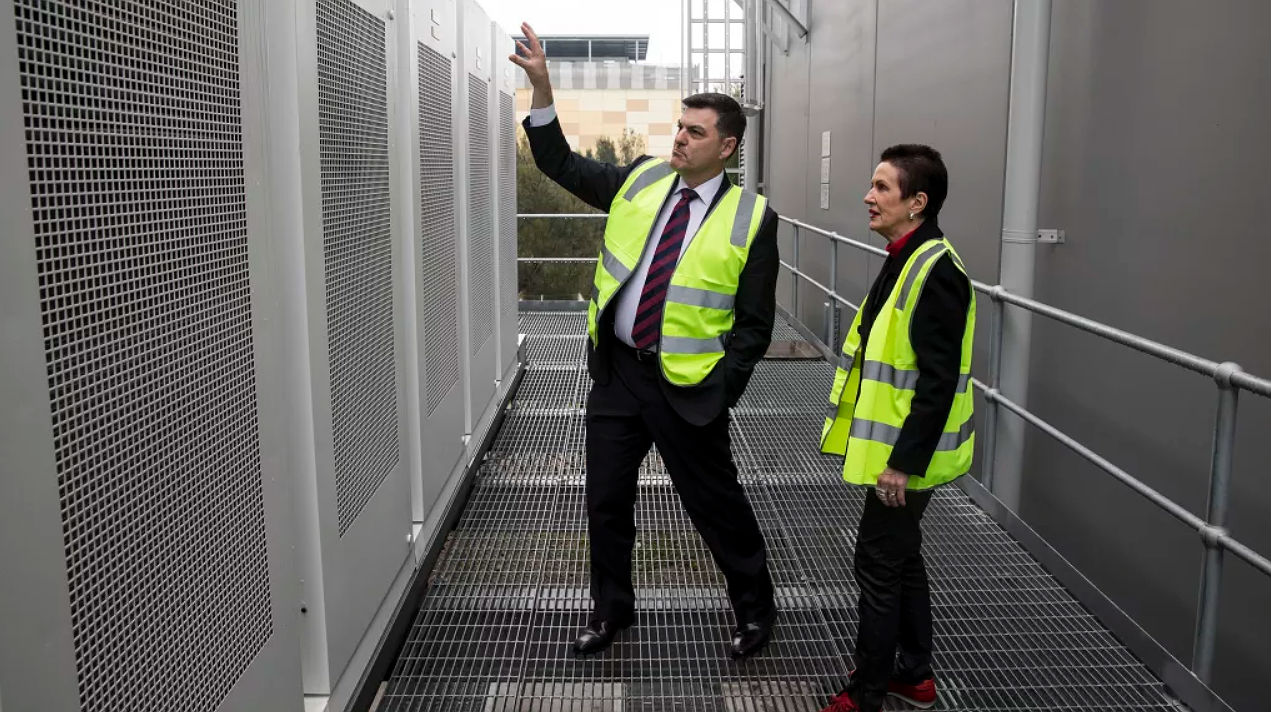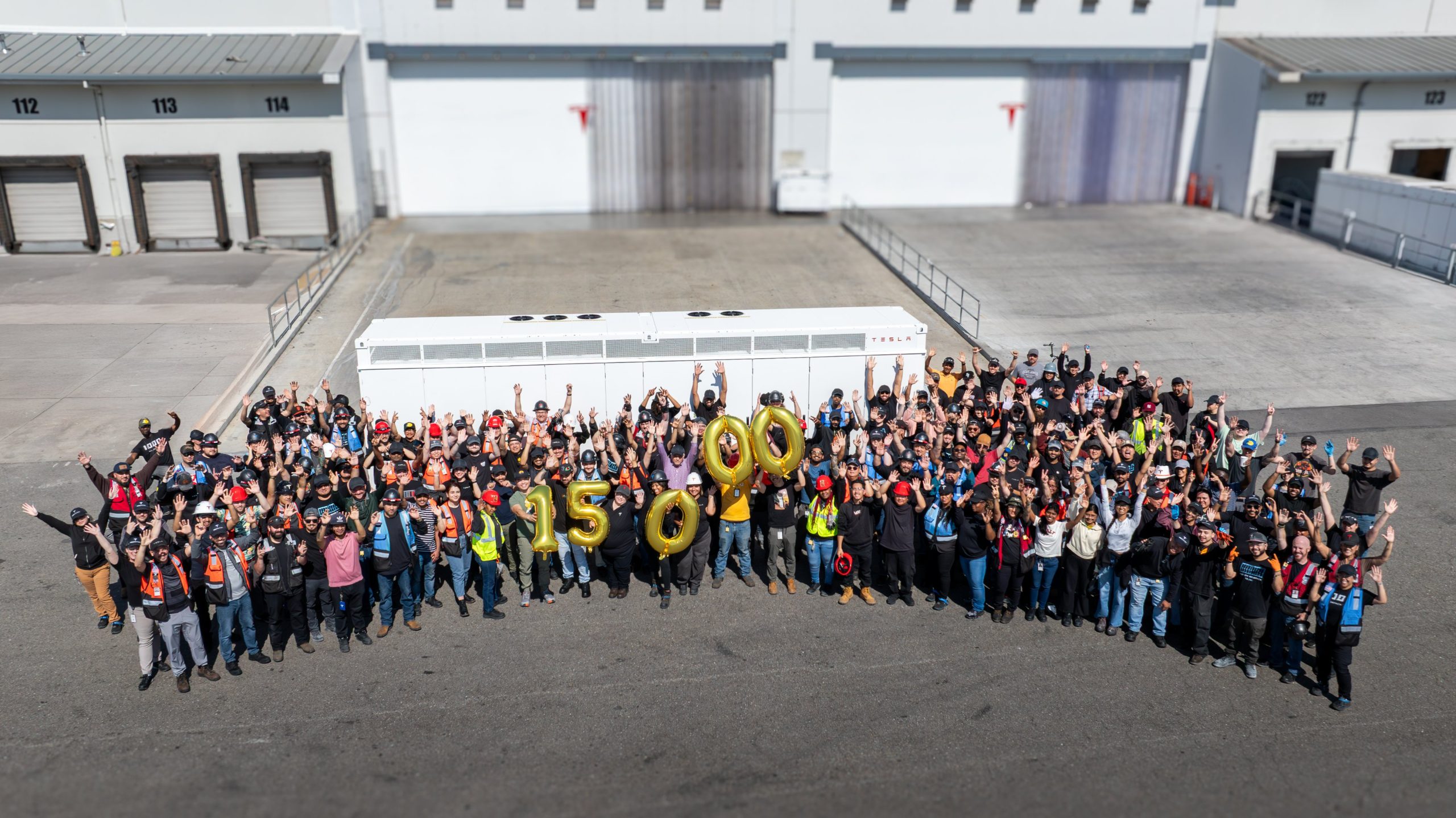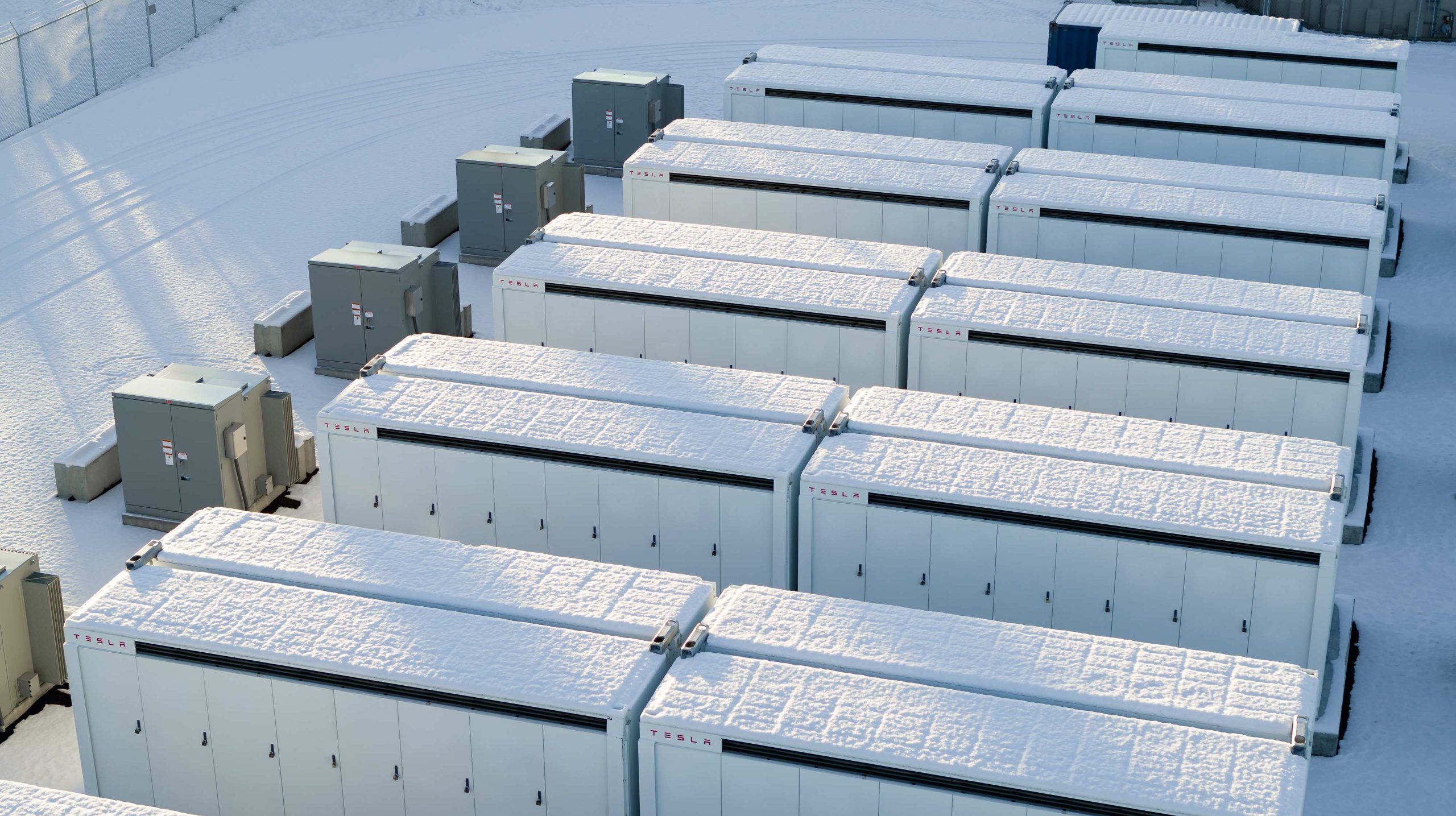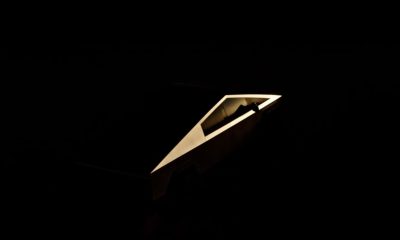

Energy
Tesla aids Sydney’s 50% renewable energy goal with new Powerpack installation
Tesla’a industrial-grade Powerpack batteries have been deployed on Sydney’s new renewable energy project at the Alexandra Canal transport depot. The installation, comprised of 1,600 solar panels and a 500 KWh Tesla Powerpack battery system, was opened by Lord Mayor Clover Moore on Wednesday.
The Alexandra Canal transport depot system is part of Sydney’s ongoing initiative to power half the city with renewable energy. In a statement to The Sydney Morning Herald, the Lord mayor stated that there are other, similar projects in the pipeline.
“We’re working towards a target of 50% of all electricity in the City of Sydney area to come from renewables by 2030. To help us achieve that target, we’re covering the roofs of our properties with as many solar panels as possible. By mid-2021, we expect to have more than 7800 solar panels on the roofs of our properties (approximately 1.5 MWh of battery storage across the city’s buildings). As the mix of storage and generation on our electricity grid changes, solar solutions like this could provide reliability and resilience to our electricity network and potentially prevent blackouts,” she said.
As an added note, Lord Mayor Moore stated that with the system in place, the Alexandra Canal transport depot could be classified as a carbon-neutral facility, saving roughly ~600 tonnes in carbon dioxide emissions per year.
Just like the immensely successful Tesla Powerpack farm near Jamestown in South Australia, the Alexandra Canal system will be tasked to provide backup power to the depot as necessary, allowing the facility to reduce its demand on the grid during peak times. The usage of the solar panels and Powerpack batteries are set to be remotely managed in real-time by TransGrid, a local electricity transmission group which awarded the Alexandra Canal transport depot contract to the Elon Musk-led company last year. In a statement to the publication, TransGrid chief executive Paul Italiano stated that large-scale batteries such as Tesla’s Powerpacks would be playing a more prominent role in Sydney’s energy network in the years to come.
“This initiative with the City of Sydney will afford the depot a significant amount of energy self-sufficiency while also sharing benefits with the wider community through the electricity network,” he said.
While Tesla’s energy business recently saw the closure of 12 solar facilities across the United States as part of the company’s ongoing workforce restructuring, the company’s energy projects continue to gain ground abroad. As noted by Elon Musk, Tesla Energy has approximately 11,000 ongoing projects in Puerto Rico, where the company continues to help the island nation get back on their feet after getting ravaged by Hurricane Maria last year. Tesla was also involved in providing stable electricity for the first time in a remote area in the Philippines.
Tesla’s Powerpacks are starting to become the battery storage solution of choice for high-profile businesses across the globe as well. Earlier this year, Manchester Science Partnerships (MSP), one of the UK’s most prominent science and technology park operators, opted to install Powerpacks on its headquarters. In the Middle East, Bee’ah CEO Khaled Al Huraimel noted that their upcoming, futuristic, headquarters in Sharjah would also be using Tesla Powerpack batteries, together with a fleet of 50 Tesla Semis for their everyday operations.
After the successful rollout of the 129 MWh Powerpack farm in South Australia, Victoria, another state in the country, has also pursued a contract with the Elon Musk-led company to install a 20 MWh Powerpack system. A massive 650 MWh virtual power plant for South Australia, comprised of solar panels and Tesla Powerwall 2 batteries installed in 50,000 homes, has also begun the first phase of its rollout.
Earlier this month, Tesla CTO JB Straubel noted that the company has been able to deploy 1 GWh worth of energy projects to date. During the 2018 Annual Shareholder Meeting, CEO Elon Musk stated that Tesla would “do another Gigawatt project” within the next 12 months, with the rate of stationary storage deployment exponentially growing every year.
“For many years to come, each incremental year will be about as much as all the preceding years, which is a crazy, crazy growth rate,” Musk said.
Energy
Tesla Lathrop Megafactory celebrates massive Megapack battery milestone
The Tesla Megapack is the backbone of Tesla Energy’s battery deployments.

The Tesla Lathrop Megafactory recently achieved a new milestone. As per the official Tesla Megapack account on X, the Lathrop Megafactory has produced its 15,000th Megapack 2 XL battery.
15,000 Megapack Batteries
Tesla celebrated the milestone with a photo of the Lathrop Megafactory team posing with a freshly produced Megapack battery. To commemorate the event, the team held balloons that spelled out “15,000” as they posed for the photo.
The Tesla Megapack is the backbone of Tesla Energy’s battery deployments. Designed for grid-scale applications, each Megapack offers 3.9 MWh of energy and 1.9 MW of power. The battery is extremely scalable, making it perfect for massive energy storage projects.
More Megafactories
The Lathrop Megafactory is Tesla’s first dedicated facility for its flagship battery storage system. It currently stands as the largest utility-scale battery factory in North America. The facility is capable of producing 10,000 Megapack batteries every year, equal to 40 GWh of clean energy storage.
Thanks to the success of the Megapack, Tesla has expanded its energy business by building and launching the Shanghai Megafactory, which is also expected to produce 40 GWh of energy storage per year. The ramp of the Shanghai Megafactory is quite impressive, with Tesla noting in its Q1 2025 Update Letter that the Shanghai Megafactory managed to produce over 100 Megapack batteries in the first quarter alone.
Tesla Energy’s Potential
During the first quarter earnings call, CEO Elon Musk stated that the Megapack is extremely valuable to the energy industry.
“The Megapack enables utility companies to output far more total energy than would otherwise be the case… This is a massive unlock on total energy output of any given grid over the course of a year. And utility companies are beginning to realize this and are buying in our Megapacks at scale,” Musk said.
Energy
Tesla Megapacks powers the xAI Colossus supercomputer
Tesla Megapacks step in to stabilize xAI’s Colossus supercomputer, replacing natural gas turbines. Musk’s ventures keep intertwining.

Tesla Megapack batteries will power the xAI Colossus supercomputer in Memphis to ensure power stability. The collaboration between Tesla and xAI highlights the synergy among Elon Musk’s ventures.
The artificial intelligence startup has integrated Tesla Megapacks to manage outages and demand surges, bolstering the facility’s reliability. The Greater Memphis Chamber announced that Colossus, recently connected to a new 150-megawatt electric substation, is completing its first construction phase. This transition addresses criticism from environmental justice groups over the initial use of natural gas turbines.
“The temporary natural gas turbines that were being used to power the Phase I GPUs prior to grid connection are now being demobilized and will be removed from the site over the next two months.
“About half of the operating turbines will remain operating to power Phase II GPUs of xAI until a second substation (#22) already in construction is completed and connected to the electric grid, which is planned for the Fall of 2025, at which time the remaining turbines will be relegated to a backup power role,” the Chamber stated.
xAI’s rapid development of Colossus reflects its ambition to advance AI capabilities, but the project has faced scrutiny for environmental impacts. The shift to Megapacks and grid power aims to mitigate these concerns while ensuring operational continuity.
The Megapack deployment underscores the collaboration among Musk’s companies, including Tesla, SpaceX, Neuralink, and The Boring Company. Tesla appears to be the common link between all of Musk’s companies. For example, The Boring Company built a tunnel in Giga, Texas. In addition, Musk has hinted at a potential collaboration between the Tesla Optimus Bot and Neuralink. And from January 2024 to February 2025, xAI invested $230 million in Megapacks, per a Tesla filing.
Tesla Energy reported a 156% year-over-year increase in Q1 2025, deploying 10.4 GWh of storage products, including Megapacks and Powerwalls. Tesla’s plans for a new Megapack factory in Waller County, Texas, which is expected to create 1,500 jobs in the area, further signal its commitment to scaling energy solutions.
As xAI leverages Tesla’s Megapacks to power Colossus, the integration showcases Musk’s interconnected business ecosystem. The supercomputer’s enhanced stability positions xAI to drive AI innovation, while Tesla’s energy solutions gain prominence, setting the stage for broader technological and economic impacts.
Energy
Tesla Energy celebrates one decade of sustainability
Tesla Energy has gone far since its early days, and it is now becoming a progressively bigger part of the company.

Tesla Energy recently celebrated its 10th anniversary with a dedicated video showcasing several of its milestones over the past decade.
Tesla Energy has gone far since its early days, and it is now becoming a progressively bigger part of the company.
Tesla Energy Early Days
When Elon Musk launched Tesla Energy in 2015, he noted that the business is a fundamental transformation of how the world works. To start, Tesla Energy offered the Powerwall, a 7 kWh/10 kWh home battery system, and the Powerpack, a grid-capable 100 kWh battery block that is designed for scalability. A few days after the products’ launch, Musk noted that Tesla had received 38,000 reservations for the Powerwall and 2,500 reservations for the Powerpack.
Tesla Energy’s beginnings would herald its quiet growth, with the company later announcing products like the Solar Roof tile, which is yet to be ramped, and the successor to the Powerwall, the 13.5 kWh Powerwall 2. In recent years, Tesla Energy also launched its Powerwall 3 home battery and the massive Megapack, a 3.9 MWh monster of a battery unit that has become the backbone for energy storage systems across the globe.
Key Milestones
As noted by Tesla Energy in its recent video, it has now established facilities that allow the company to manufacture 20,000 units of the Megapack every year, which should help grow the 23 GWh worth of Megapacks that have already been deployed globally.
The Powerwall remains a desirable home battery as well, with more than 850,000 units installed worldwide. These translate to 12 GWh of residential entry storage delivered to date. Just like the Megapack, Tesla is also ramping its production of the Powerwall, allowing the division to grow even more.
Tesla Energy’s Role
While Tesla Energy does not catch as much headlines as the company’s electric vehicle businesses, its contributions to the company’s bottom line have been growing. In the first quarter of 2025 alone, Tesla Energy deployed 10.4 GWh of energy storage products. Powerwall deployments also crossed 1 GWh in one quarter for the first time. As per Tesla in its Q1 2025 Update Letter, the gross margin for the Energy division has improved sequentially as well.
-

 Elon Musk2 days ago
Elon Musk2 days agoTesla investors will be shocked by Jim Cramer’s latest assessment
-

 News1 week ago
News1 week agoTesla Robotaxi’s biggest challenge seems to be this one thing
-

 Elon Musk2 weeks ago
Elon Musk2 weeks agoElon Musk slams Bloomberg’s shocking xAI cash burn claims
-

 News2 weeks ago
News2 weeks agoTexas lawmakers urge Tesla to delay Austin robotaxi launch to September
-

 Elon Musk1 week ago
Elon Musk1 week agoFirst Look at Tesla’s Robotaxi App: features, design, and more
-

 Elon Musk2 weeks ago
Elon Musk2 weeks agoTesla Robotaxis are becoming a common sight on Austin’s public roads
-

 Elon Musk2 weeks ago
Elon Musk2 weeks agoxAI’s Grok 3 partners with Oracle Cloud for corporate AI innovation
-

 Elon Musk2 weeks ago
Elon Musk2 weeks agoSpaceX President meets India Minister after Starlink approval
















